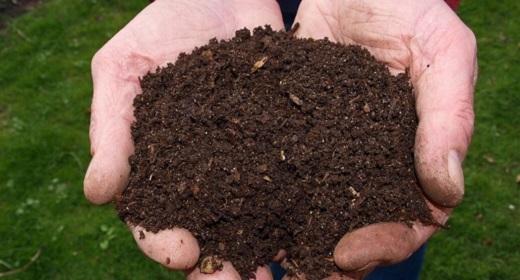by Ocean Robbins: When I think about pie, I think of Charlie Chaplin and the custard pie fights of silent movies…
I recall the nursery rhyme about four and twenty blackbirds. And of course the expression “American as apple pie.” If you were more into math than I was, the word might also evoke the formula for the circumference of a circle. And if you were a rock and roller, you might be humming a chorus about driving your Chevy to the levee.
But two ideas that don’t typically go with pie are “plant-based” and “healthy.” In this article, I hope to change that.
The History of Pie
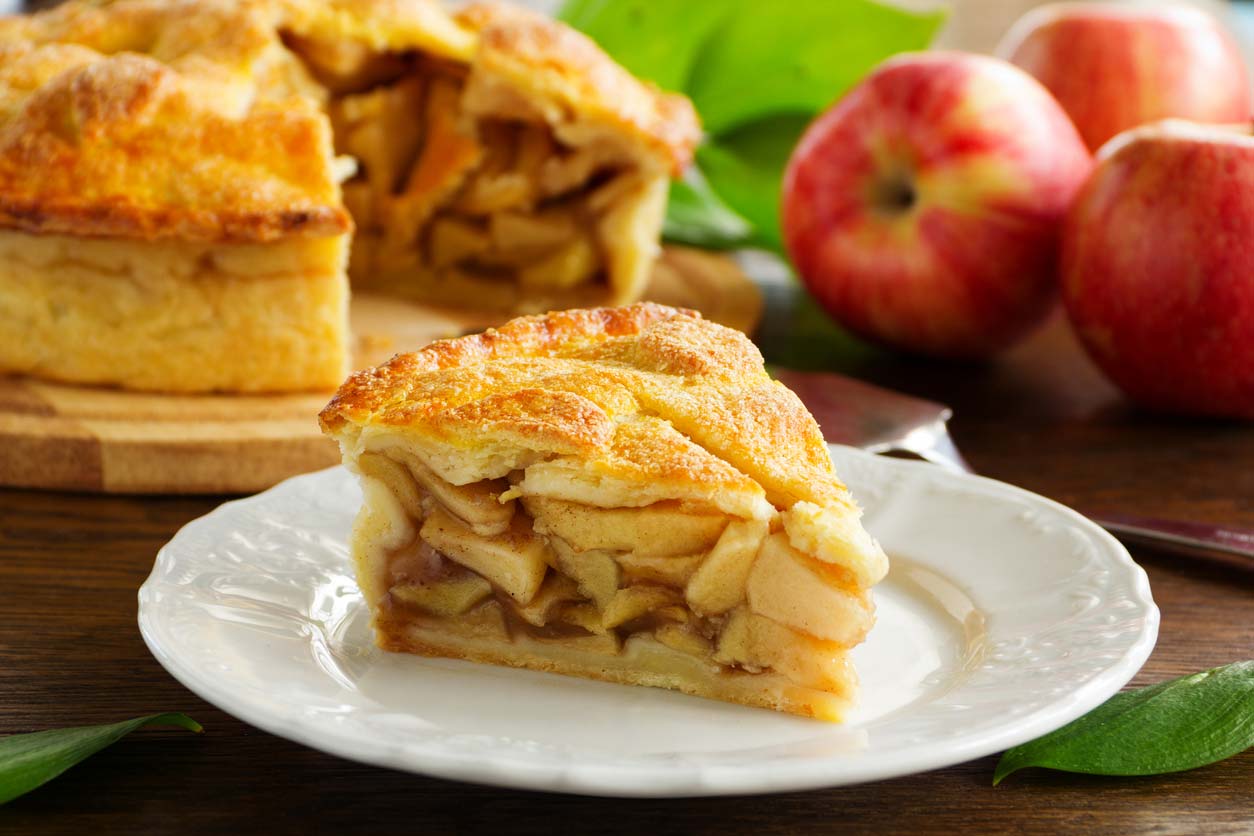
Most cultures have some version of a pie, whether sweet or savory. That is if we accept a very broad definition of pie: a dish consisting of a crust with filling that’s usually baked. Historically, pies were a far cry from what we think of today. In ancient times, pie crusts or shells were sometimes just a vessel to keep the filling from running and were not meant to be eaten. According to Janet Clarkson, who wrote an entire book about the history of pies, these shells were known as “coffins.” Not that the contents were deceased (although some were), or that the contents would render you deceased (although I’m sure that happened as well). The word coffin originally referred to any sort of box or basket.
It’s hard to know for sure who baked the first pie (dough and round baking dishes aren’t exactly the most enduring archeological artifacts). But there’s some consensus that two early pie-making civilizations included the ancient Egyptians and Greeks. Both had the technology, and they had the grains. As far back as 6000 BCE, a traveler to the Nile delta might have been offered a pie with a crust made of ground oat, barley, and rye, filled with honey, and baked over hot coals.
The expression “as American as apple pie” shouldn’t fool you into thinking Americans invented it, any more than French fries or hamburgers are a product of Parisian and German culinary innovation, respectively. The British, along with many others, had discovered the joy of baking apples in crusts long before America was the apple of the world’s eye. And apple strudel, which certainly fits the definition of a filling baked in a crust or shell, predates the American experience by at least a century.
Pie Filling from the 15th Century
Oh, and that song about the blackbirds? That wasn’t made up, I’m sorry to say. The European pie tradition of the middle ages essentially consisted of throwing as many dead animals as possible into a single crust. The origin of the word “pie” itself testifies to this tradition, referencing the habits of the magpie, a bird that constructed its nest from odds and ends. Believe it or not, one 15th century pie recipe included the following ingredients: “beef, beef suet, capons, hens, both mallard and teal ducks, rabbits, woodcocks, and large birds such as herons and storks, plus beef marrow, hard-cooked egg yolks, dates, raisins, and prunes.” I assure you that we will not be sharing a healthy plant-based version of this pie below.
For very special occasions, say “to set before a king,” medieval chefs invented the “animated pie,” with live animals like birds, frogs, rabbits, and turtles escaping from the crust once it was cut open. At at least one party held by Britain’s King Charles I, a cold pie was baked big enough to hide the dwarf Jeffrey Hudson, who emerged from the crust dressed in a miniature suit of armor and bowed to the queen.
Looking back on what I’ve just written, I am realizing that this introduction isn’t exactly an argument for the inclusion of pies in a healthy, ethical, and sustainable plant-based diet.
But healthy pie recipes do exist. These days, it’s easier than ever to create delicious sweet or savory pies using whole food, plant-based ingredients. And if you like, you can make them gluten-free, too!
Why Eat Pies?
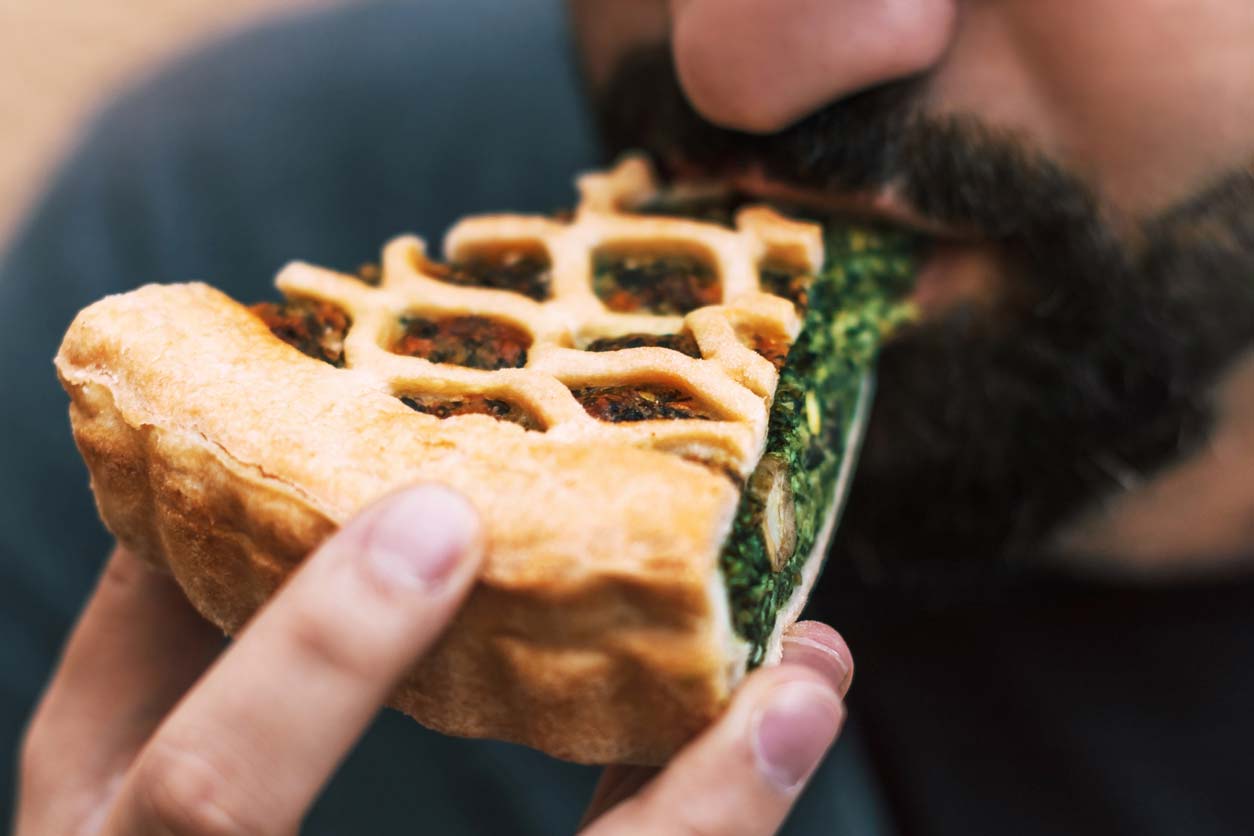
Pies are great ways to use up ingredients that might not be all that exciting on their own. That container of leftover lentils in the fridge, those veggies in the crisper drawer that have seen better days, and even fruit that’s fast approaching the twilight of its life can be stretched into a full meal or a nutrient-packed dessert through the magic of pies.
Pies are great for a crowd or larger families, as they’re often quite filling. So if you have multitudes to feed, pies might just do the trick.
At least in the US, we associate pies with holidays. For example, pumpkin pie on Thanksgiving, apple pie for July 4th, and lemon meringue pie on — I’m not making this up — National Lemon Meringue Pie Day (August 15). So they offer many opportunities to transform traditional meals into healthier versions. Pie is perhaps the ultimate comfort food, so even if you leave out problematic ingredients, your adaptations can typically still make people happy.
Because we’re conditioned to like pies, they’re a great way to experiment with a food you aren’t familiar with or are less likely to try in another form. Let’s say you belong to a CSA (community support agriculture) or co-op, and you end up with a dozen persimmons, a pound of rhubarb, or a giant green zucchini. Any of those ingredients could fill a pie crust and give you a whole new experience of that food.
Pies don’t just come in 10” rounds either. You can also bake “hand pies” for small meals and snacks. Because they’re portable, you can brown bag them for lunch, or take them on picnics and road trips. Many culinary traditions have their signature version of a hand pie: empanadas and samosas are two well-known and well-loved examples.
And because pies “feel” decadent, you can get away with stuffing them with healthy ingredients and get no (or very few) complaints from the picky eaters in your life.
Types of Pies
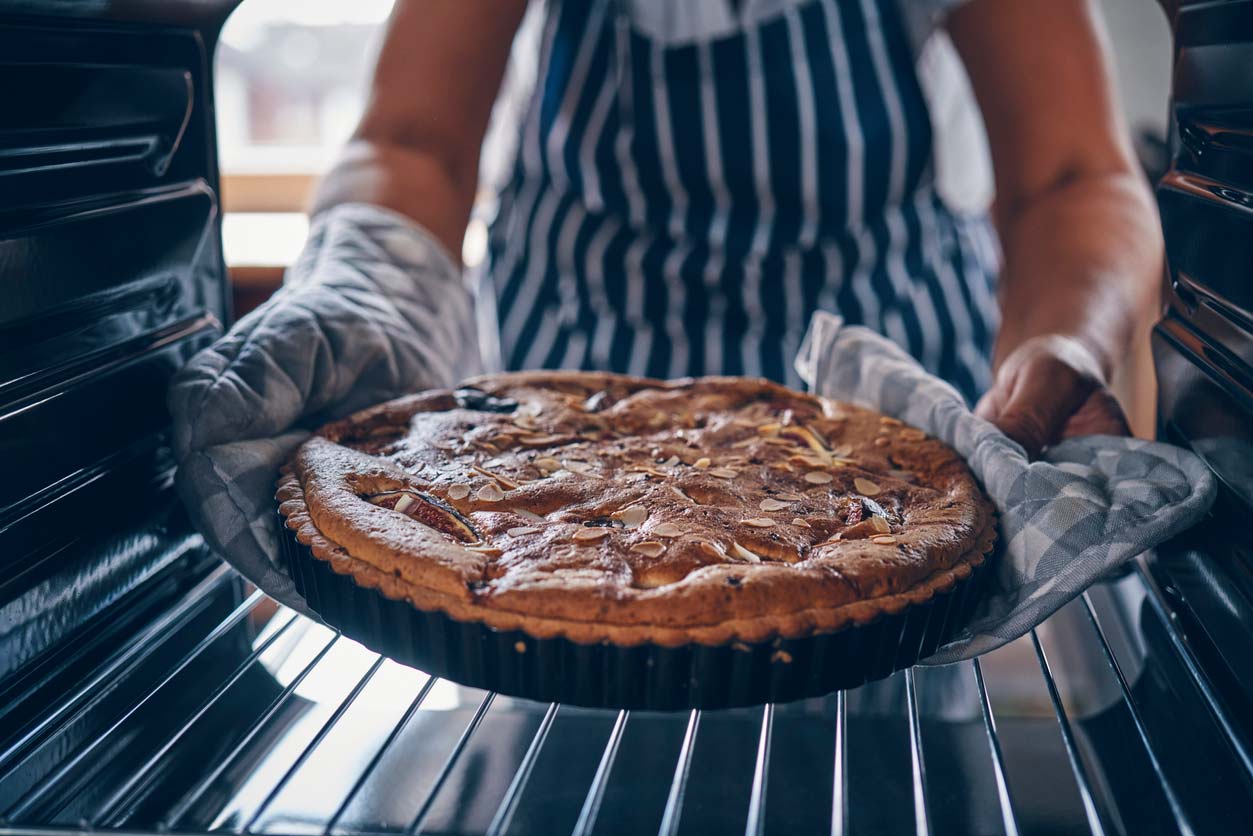
Let’s divide the world of pies into two main categories: savory and sweet. Savory pies are the meals, and sweet ones are the desserts.
Savory Pies
Pot pies traditionally feature meat and vegetables in a deep dish, covered with a domed crust. Many pot pie recipes omit the bottom crust, so the dish is really a baked stew with an edible lid. The two most common varieties are chicken and beef pot pies, which provide a jumping-off point for creating healthy, plant-based alternatives.
Shepherd’s pies have historically consisted of a lower layer of ground meat covered with a mashed potato crust. As the name implies, the most common meat was lamb or mutton. Similar pies made with beef were called “cottage pies.”
Hand pies are small, individual servings, typically with the filling completely enclosed within a crust. In addition to the empanadas and samosas already mentioned, this category includes Cornish pasties, Jamaican patties, and even Italian calzones. They can be eaten hot or cold, which makes them good portable choices.
Most pies are made with single-layer crusts, either soft or hard, flaky or solid. Another category uses phyllo dough, which comes in very thin layers rolled together (think spanokopita). Turkish pies called borek use phyllo dough to enclose (typically) meat, cheese, and vegetables.
Sweet Pies
If we were to word-associate about pie, we’d probably begin with fruit pies. In the US, apple pie is the default. But, of course, many kinds of fruits are absolutely fabulous in pies. Strawberry-rhubarb is a fine combination of sweet and tart; blueberry pies are incredible, and cherry and peach are no slouches either. Fruit pies can have solid crusts, or if you have some time on your hands, and you’re looking to impress, you can top your fruit pie with a lattice crust.
Other kinds of sweet pies include galettes, tarts, mousse pies, custard pies, meringue pies, and there are also sweet veggie pies that use pumpkin, sweet potato, or other flavorful vegetable-based fillings.
How to Make Pies Plant-Based and Healthier
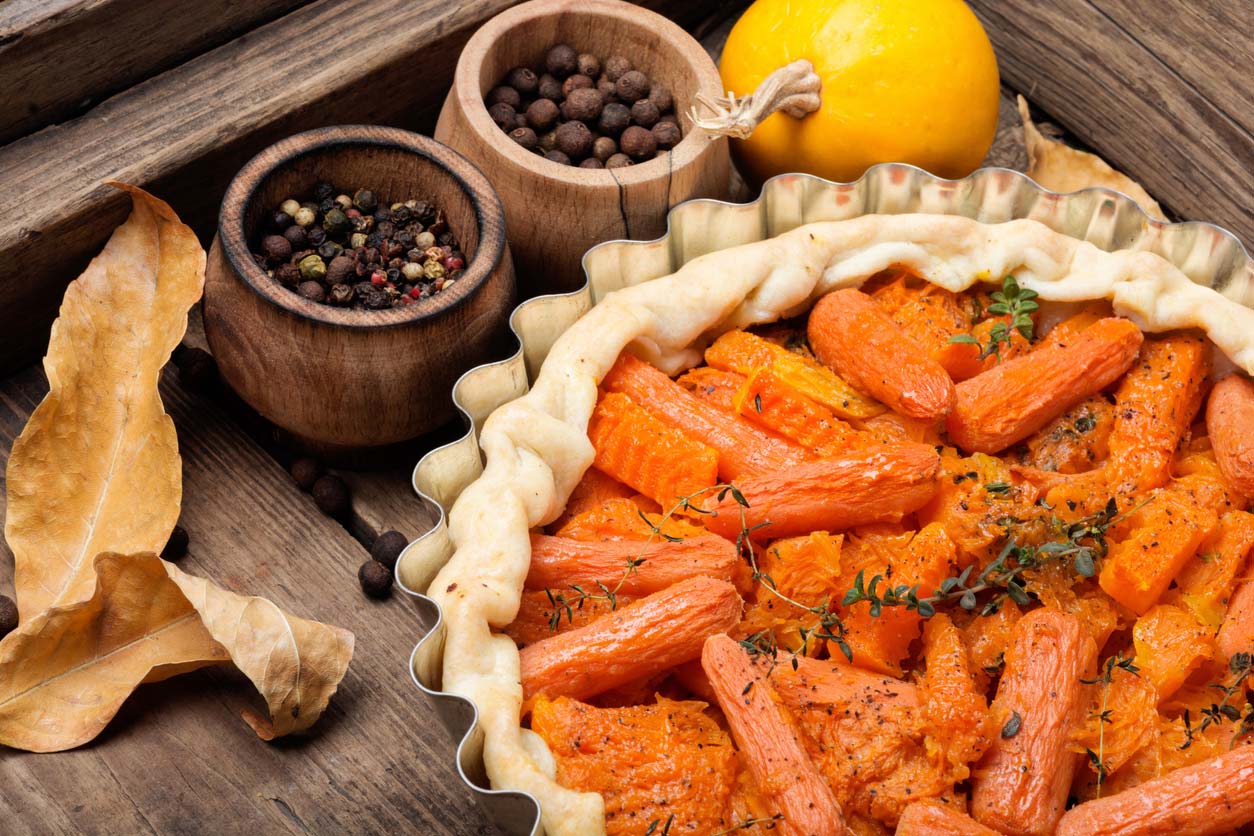
We’ve looked at some pretty tempting pies so far, except that most of them have contained ingredients you may want to minimize or eliminate from your diet. So have I just been teasing you with forbidden fruit (pies), or can we make these pies plant-based and healthy? I think you know the answer…
Sugar
You can replace some or all of the refined sugar in a pie recipe with date paste, fruit, or a variety of healthier sweeteners.
Flour
Pie crusts typically require flour. You can choose healthier flours than the default white-bleached variety, such as 100% whole wheat flour, chickpea flour, almond flour, buckwheat flour, oat flour, or rice flour. There are also several varieties of gluten-free flour mixes available in many supermarkets and health food stores these days.
The raw vegan community has given us raw food pie crusts, which have the added advantage of not needing to be baked, so we can have our pie and eat it quickly. Raw food crusts typically include ground nuts or seeds, and dates or other sweet dried fruits.
And, as we’ve seen, some so-called pies don’t have crusts at all. Just use a pie plate, and you can have the spirit and the shape of the pie without the dough. Of course, you’ll need the right ingredients so everything holds together.
Eggs
There are several ways to replace eggs in a pie recipe, depending on the function of the eggs. Flax meal and water (also known as “flax eggs”) can bind ingredients together in a pastry or quiche. The water leftover from canned or cooked chickpeas, called aquafaba, makes an excellent meringue base. And soft or silken tofu can often replace eggs in quiches and frittatas.
It’s just as easy to dive into the savory world of meat pies by substituting beans and other legumes, mushrooms, and veggies like eggplant that can approximate the mouthfeel of meat. And if you’re cooking for those who aren’t really into veggies yet, you can help them transition with plant-based meat analogues, which are becoming more realistic by the day.
You can also replace cheese with tofu, plant-based cheese analogues (use these sparingly because they typically contain lots of processed ingredients and sometimes even fractionated oils), or your own homemade nut cheese.
6 Scrumptious & Healthy Pie Recipes
Now it’s time to try your hand at pie-making. Our healthy pie recipes are varied and absolutely delicious. And, with all the variety, there’s something for just about everyone. We’re including an even six — three sweet and three savory — just to be sure we’re not playing favorites.
1. Raw Chocolate Mousse Pie
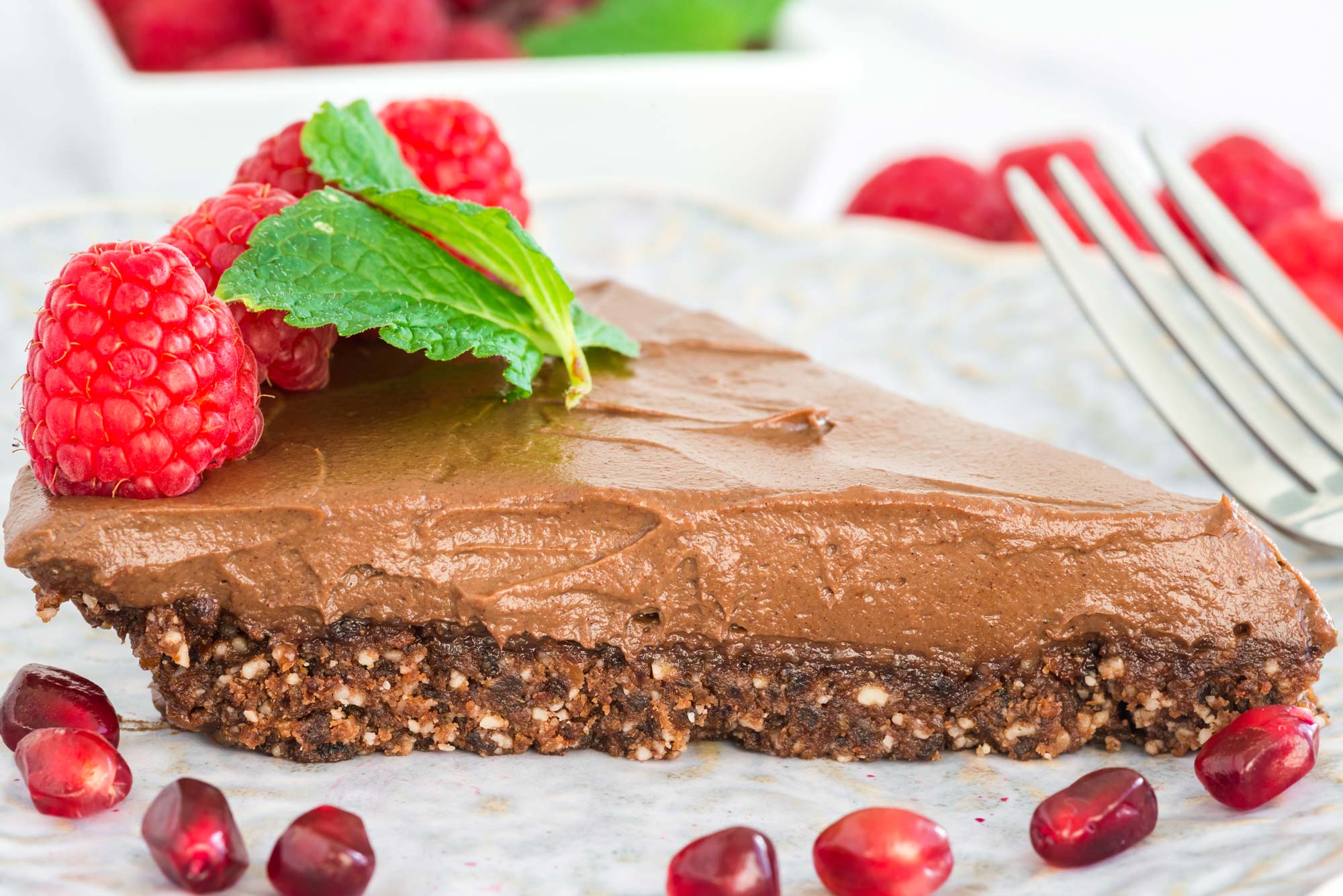
Creamy, chocolatey, and luscious, yet without flour or oil — is this decadent pie for real? Yes, chocolate dreams do come true! Plant-based ingredients like nuts and avocado create a rich dessert that is packed with nutritional goodness. This pie is definitely a crowd-pleaser, even crowds that “don’t” eat plants!
2. Avocado Key Lime Pie
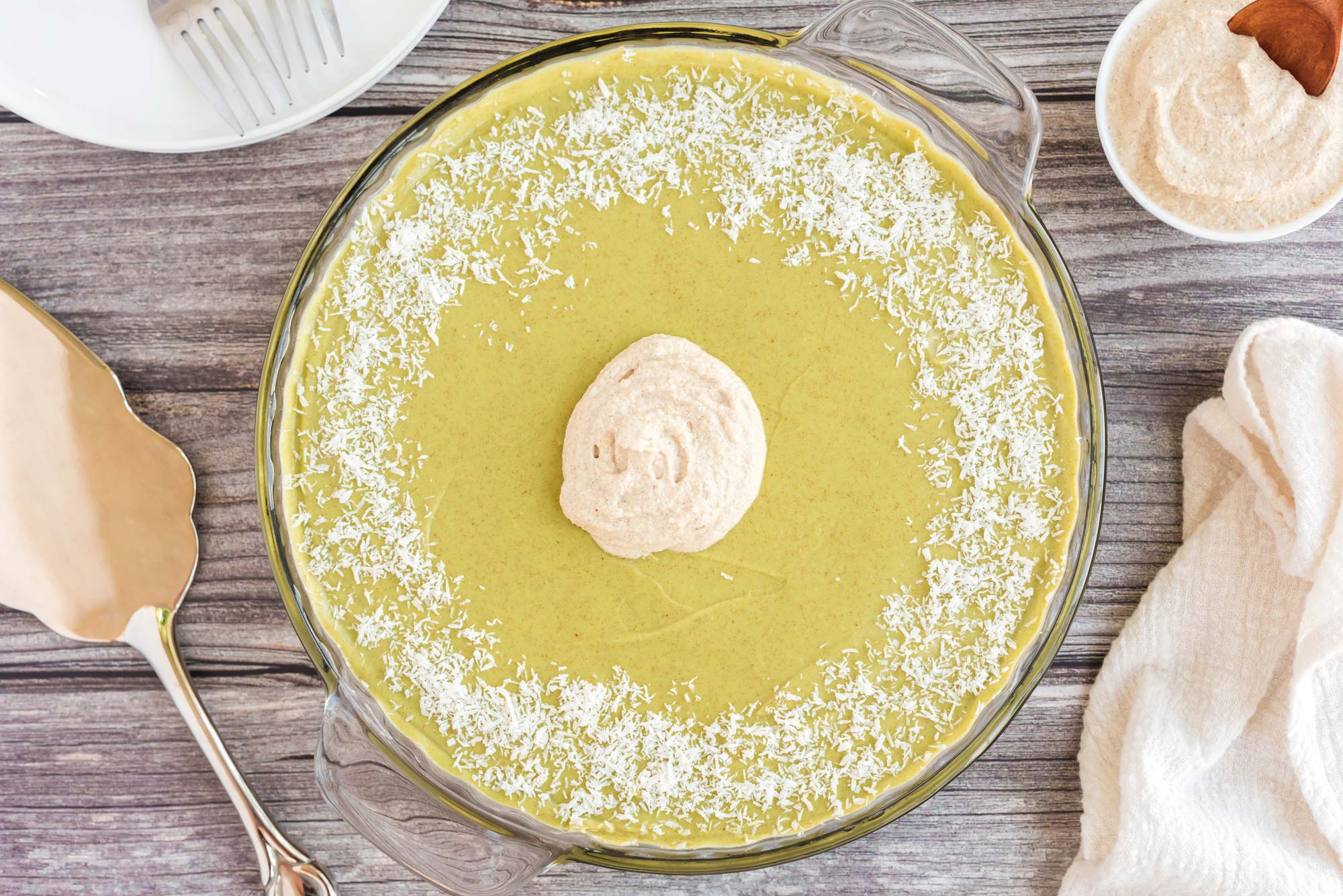
Do you know of a yummy dessert that gives you 13 grams of fiber per serving? Now you do — meet Avocado Key Lime Pie! There’s a lot of fiber hidden in avocados, as well as numerous nutrients like folate, magnesium, potassium, vitamin C, B vitamins — and more! Combined with the nuts and dates, this is one nutrient-dense and fiber-licious end to your meal!
3. Sweet Potato Pie
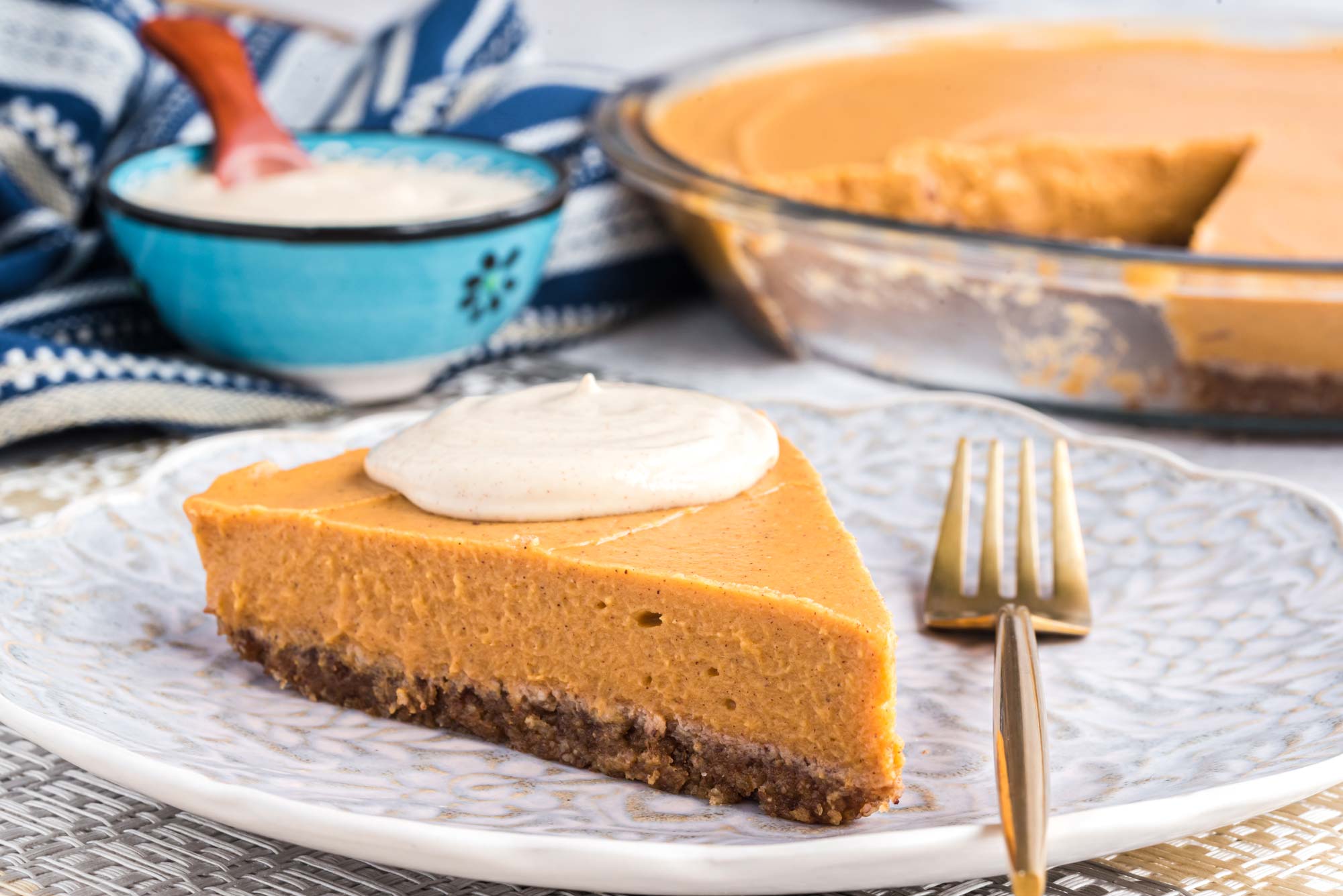
Feel all the good vibes and warm energy of autumn with each bite of this sweet potato pie. Creamy and slightly sweet, sweet potatoes offer plentiful fiber and vitamin A, helping your body remain healthy during the cooler months, at the holidays, or anytime you want to enjoy it.
4. Mushroom and Kale Pot Pie
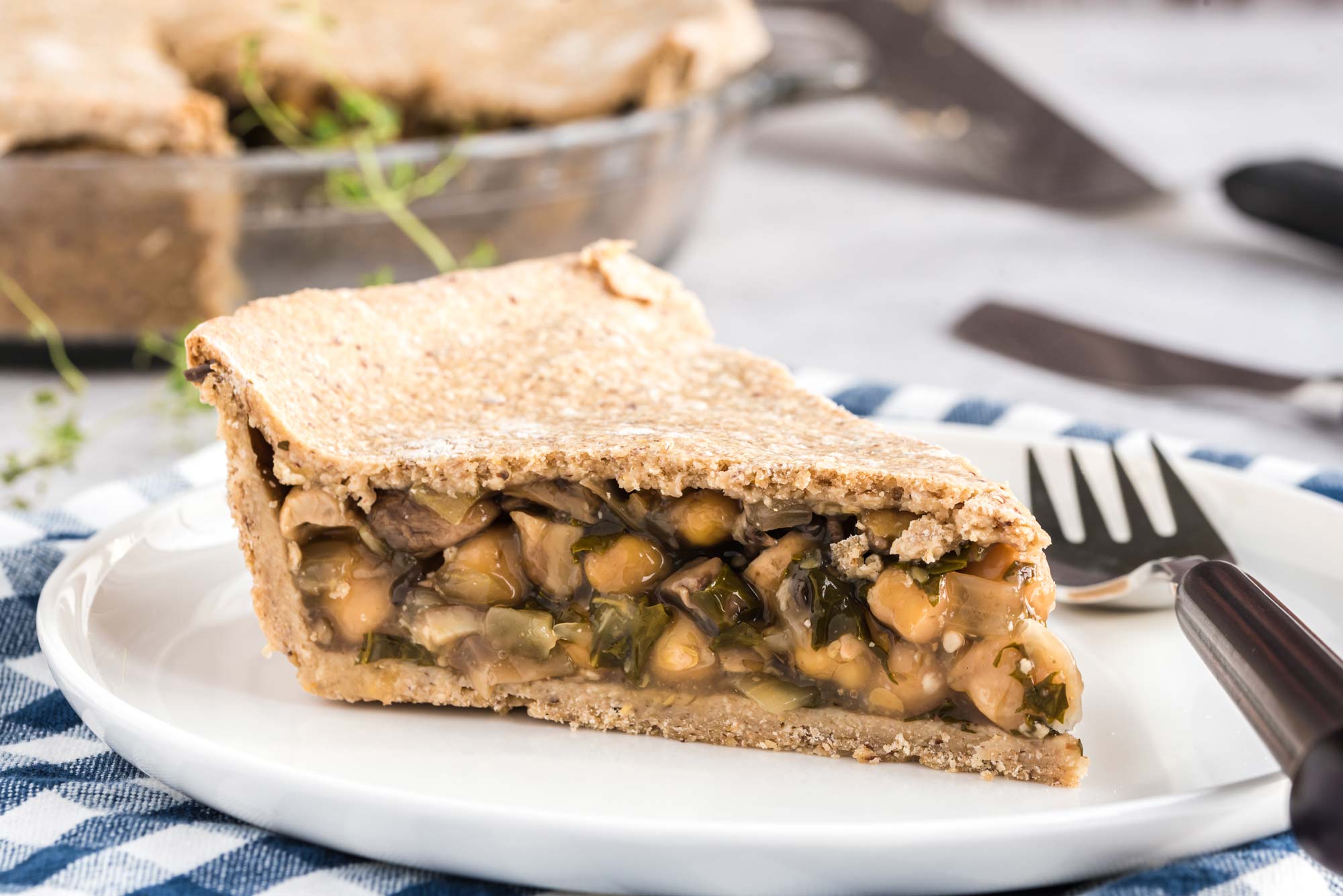
How can a pie be so healthy yet feel so indulgent? Mushroom and Kale Pot Pie has all the elements to qualify as both a health food and a comfort food. Immune-supporting mushrooms, nutrient-dense kale, and pathogen-fighting aromatics bring an irresistible combination of flavor, textures, and nutrition to this tasty pie.
5. Cauliflower and Chickpea Samosas
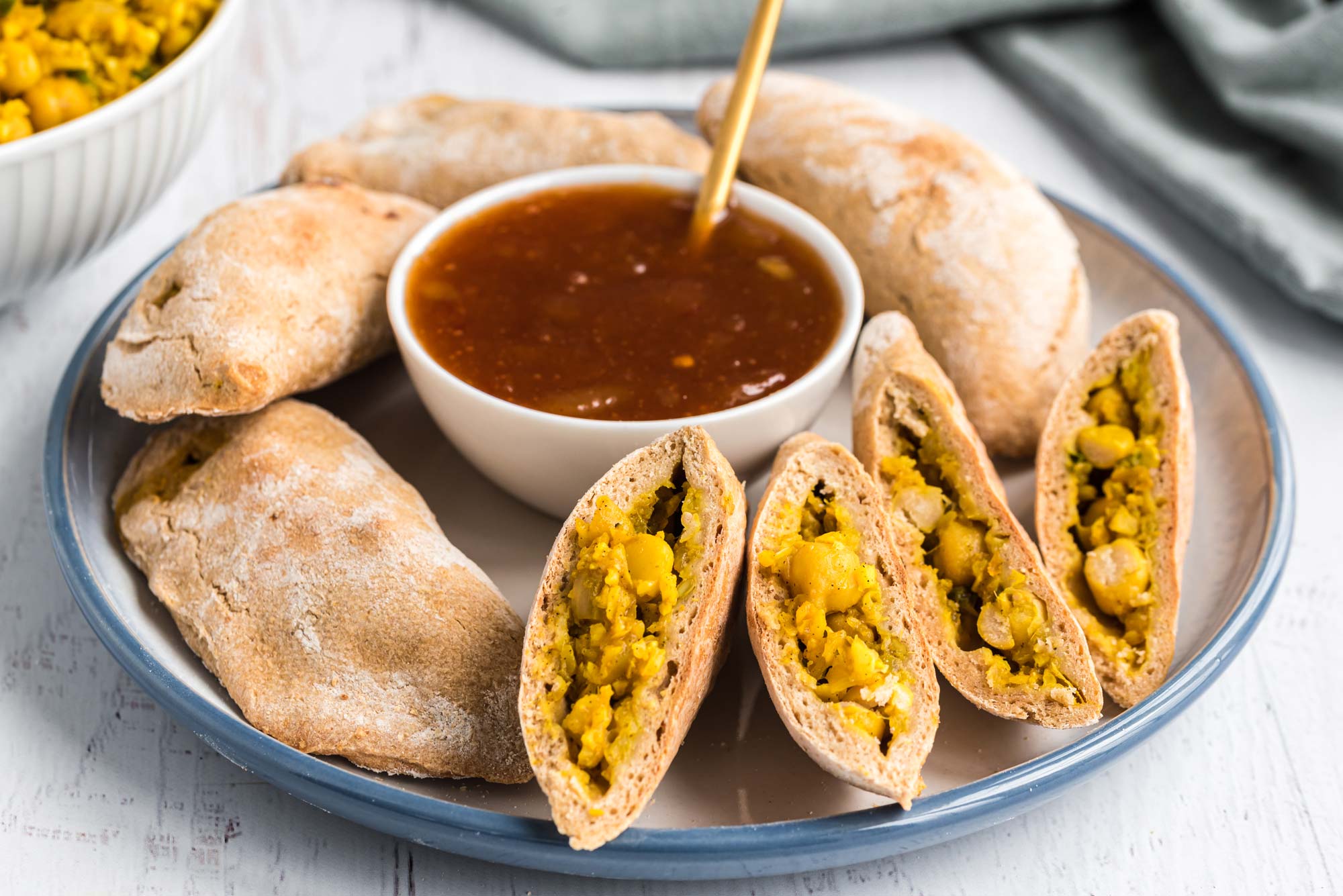
Have fun in the kitchen while making our take on a restaurant-style Indian favorite — Cauliflower and Chickpea Samosas. Cauliflower is added for vitamin C, chickpeas are added for plant-powered protein, and whole-wheat flour is a rich source of fiber (you can also go with a gluten-free flour if you prefer). Go all in and make your own dough or purchase organic whole grain dough at the store to keep it simpler.
6. Veggie Quiche
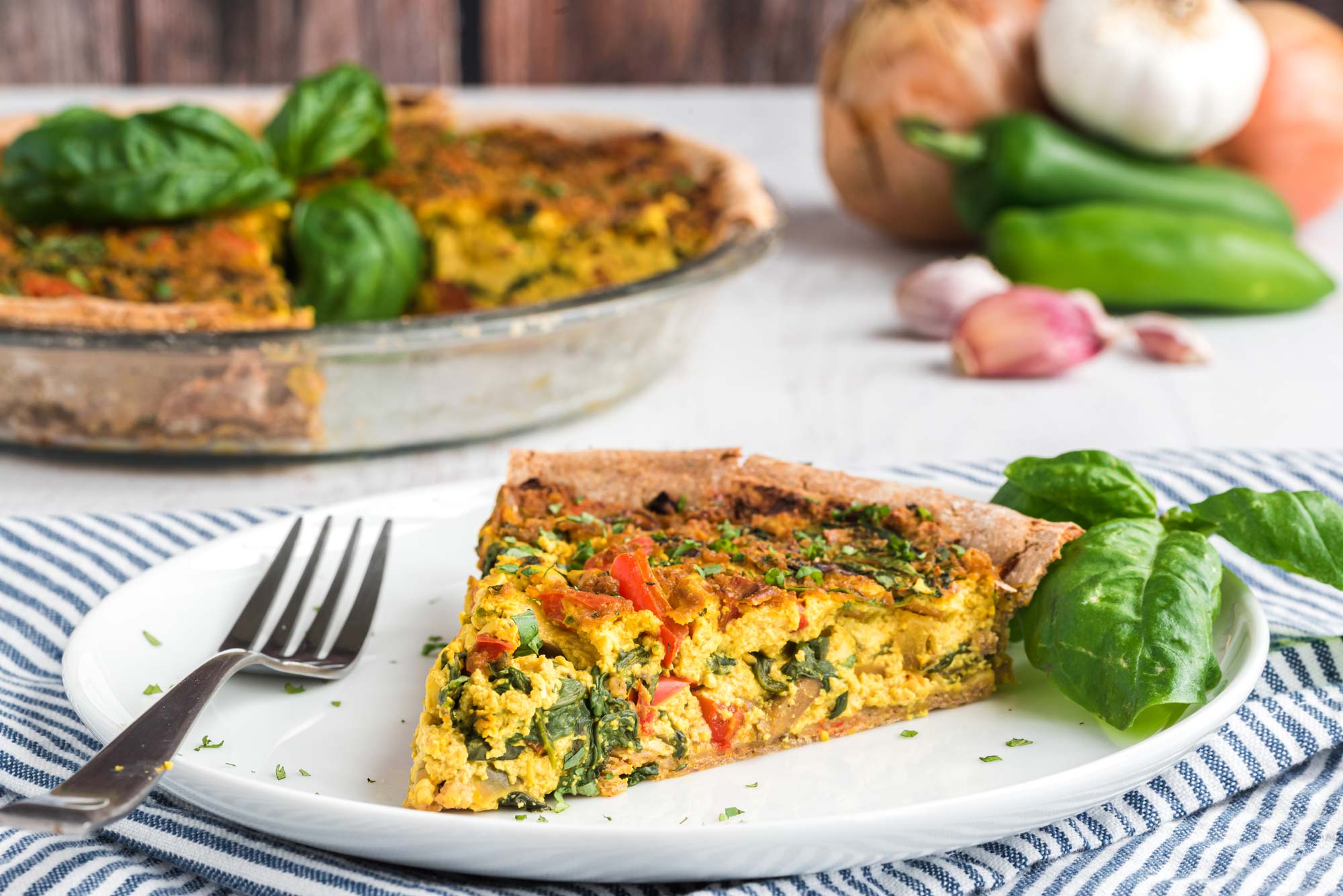
Once the dough is made, this quiche recipe comes together quickly. To make it even easier, prep the dough and the filling ahead of time and store them in the refrigerator until you’re ready to impress with a simple and elegant breakfast (or dinner!). Alternatively, purchase a 9-inch pie shell and omit the dough-making process altogether!
One Last Word About Healthy Pies
Although at first glance it may not seem like pies are a health food, there are plenty of ways to adjust them to make them healthy and plant-based. Whether sweet or savory, pies can be a fun and delicious way to share food with loved ones and get more fruits and vegetables into your diet — without depending on animal products and unhealthy ingredients.
FROM THE EDITOR OF AWAKEN.COM –
We are proud to announce a new partnership with Food Revolution to bring our readers Summits, Seminars and Masterclasses on health, nutrition and Earth-Conscious living.











